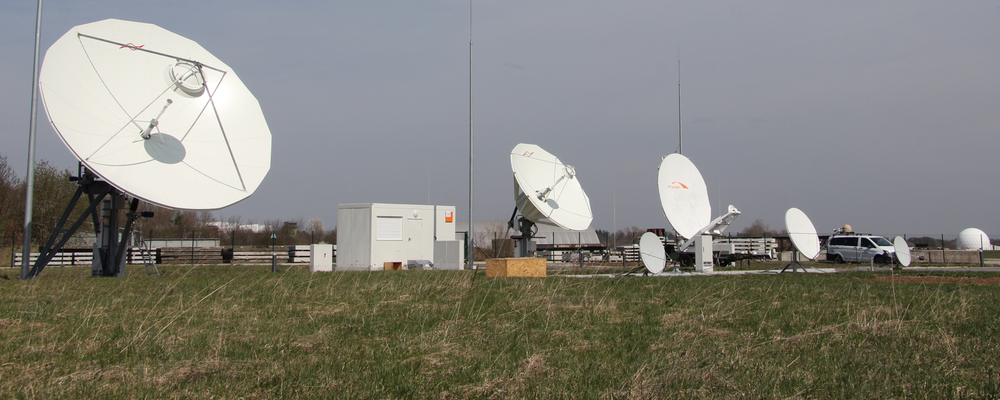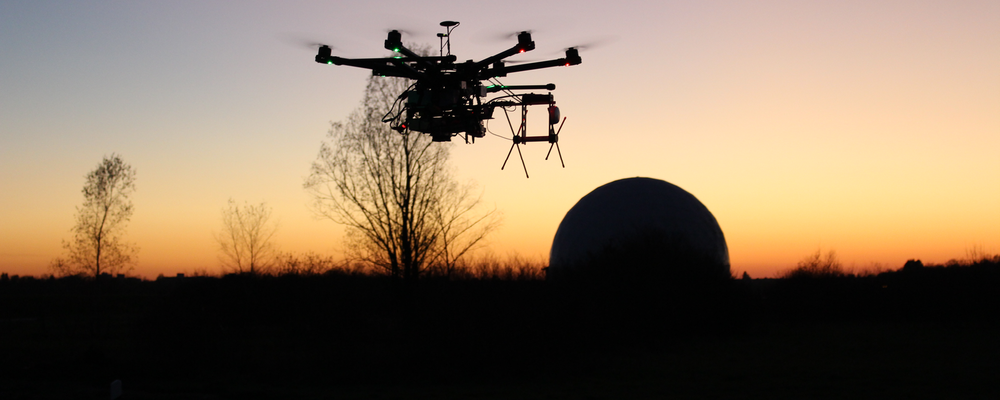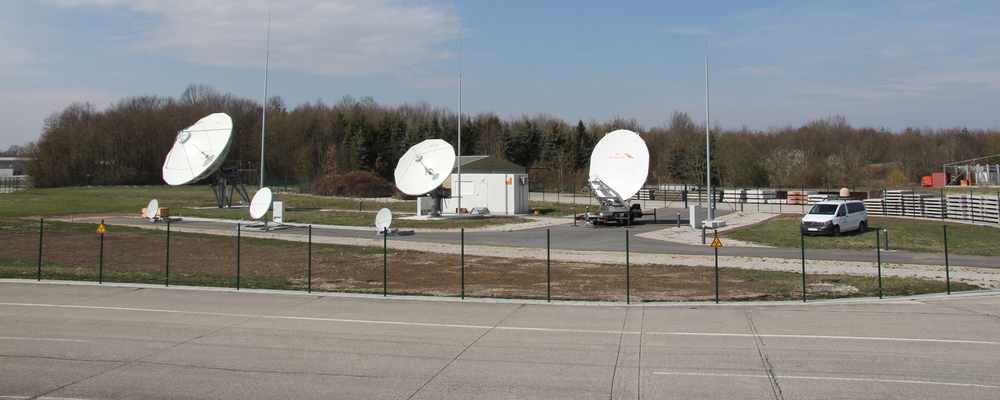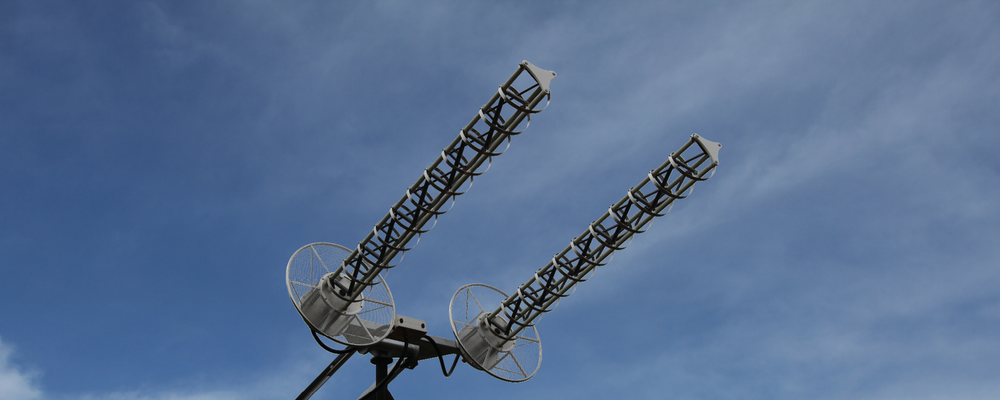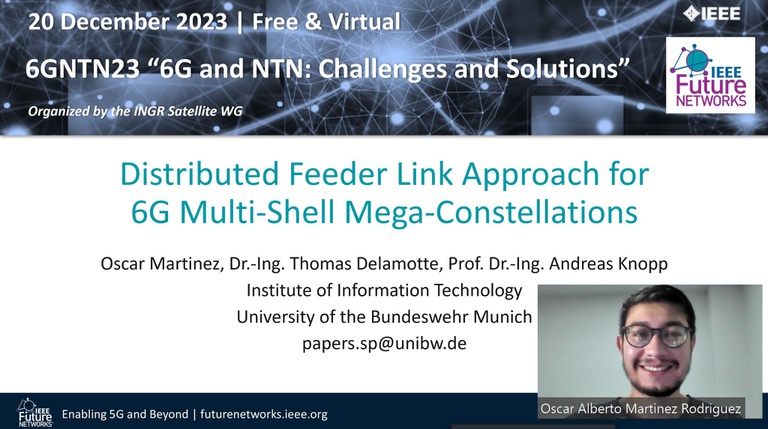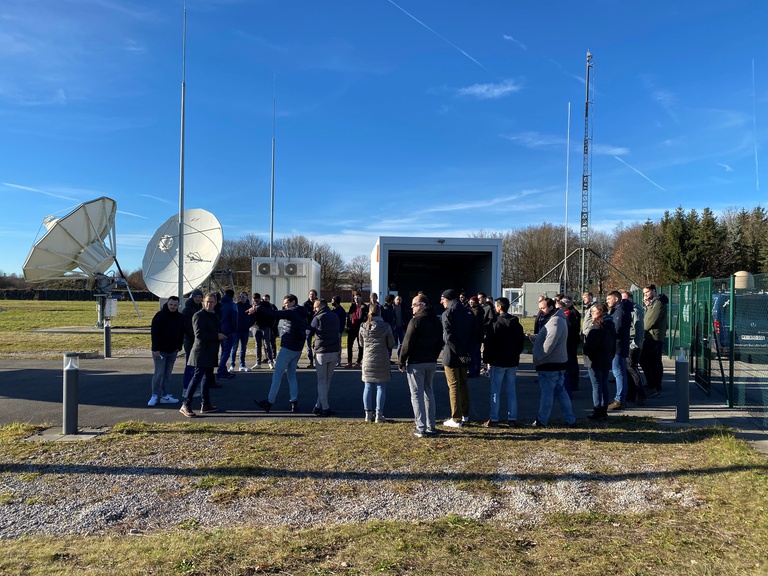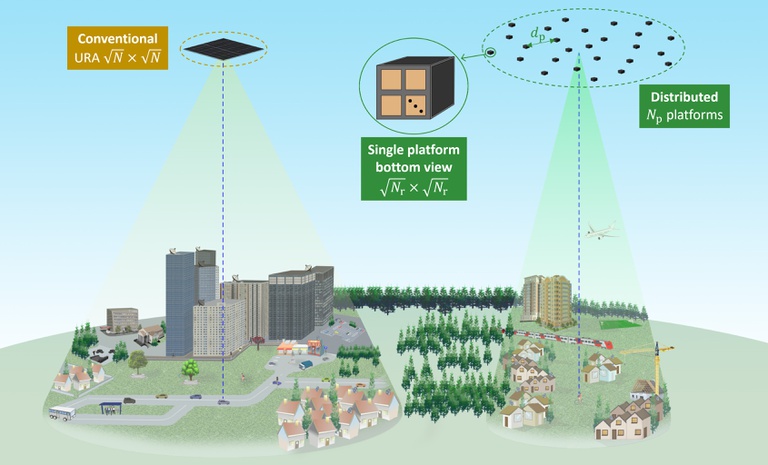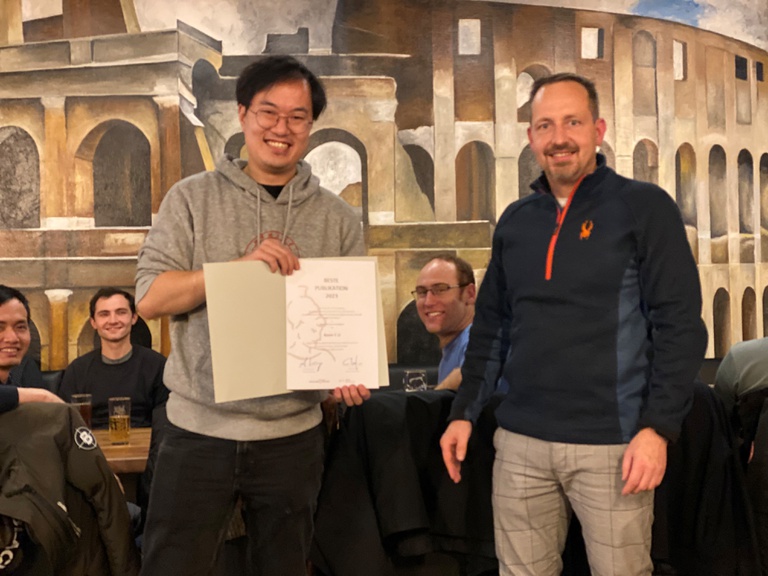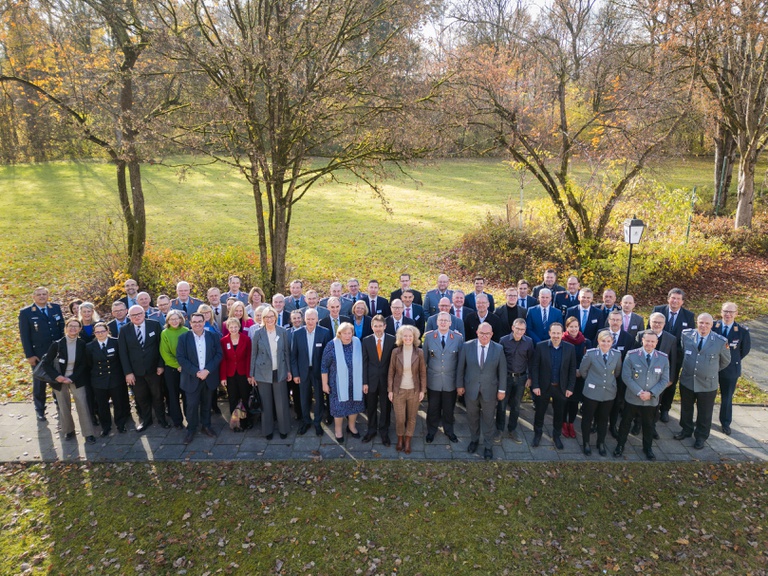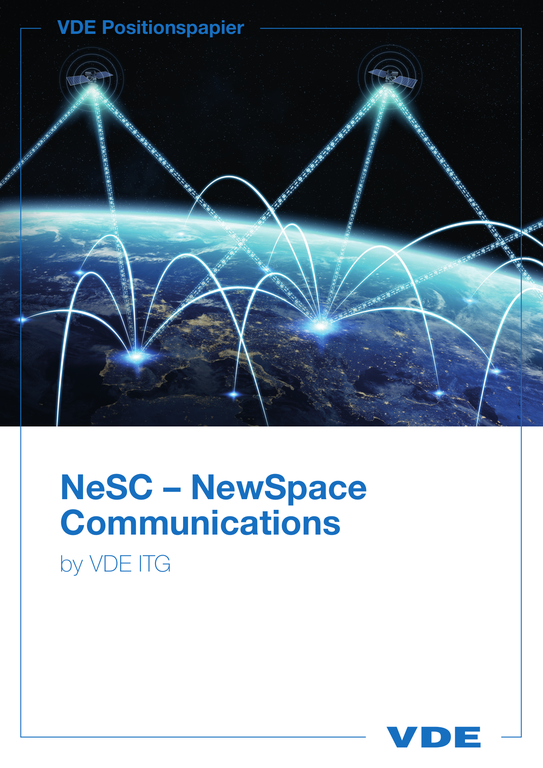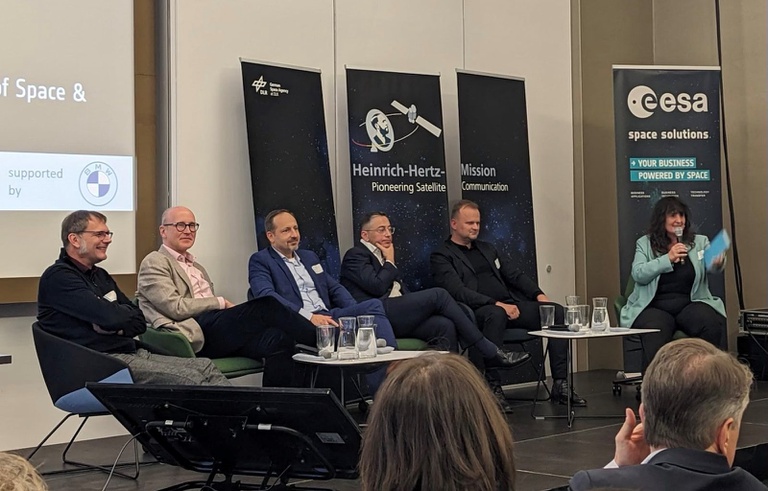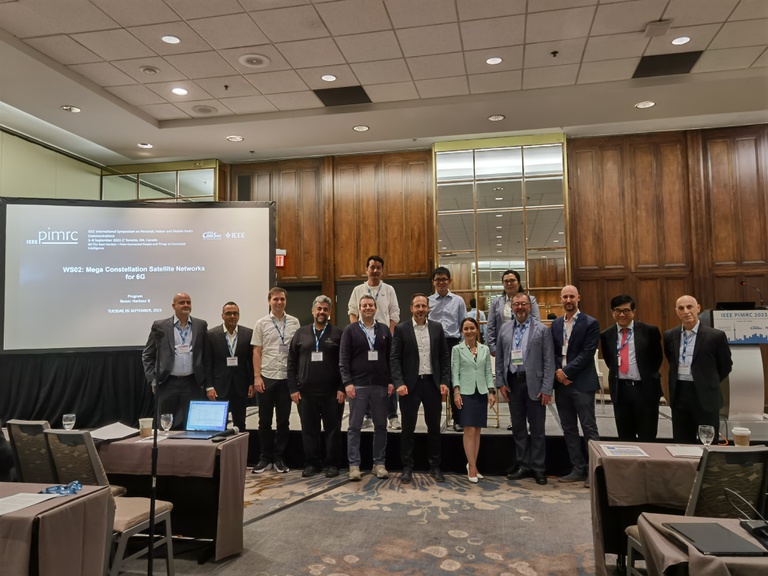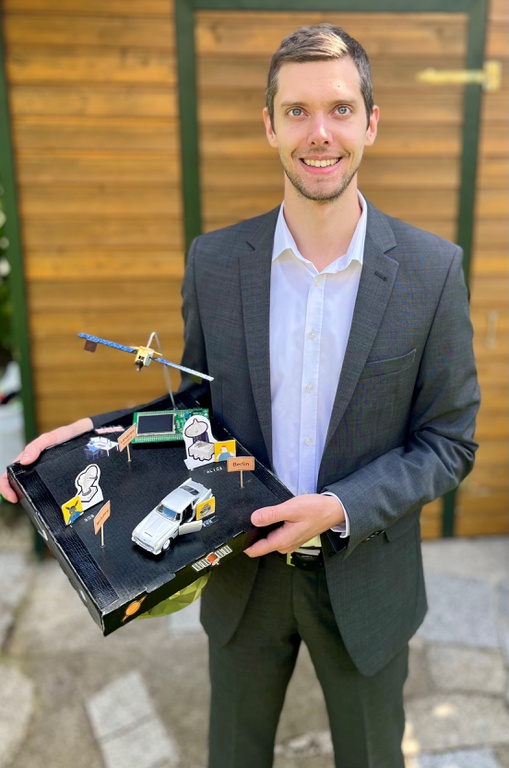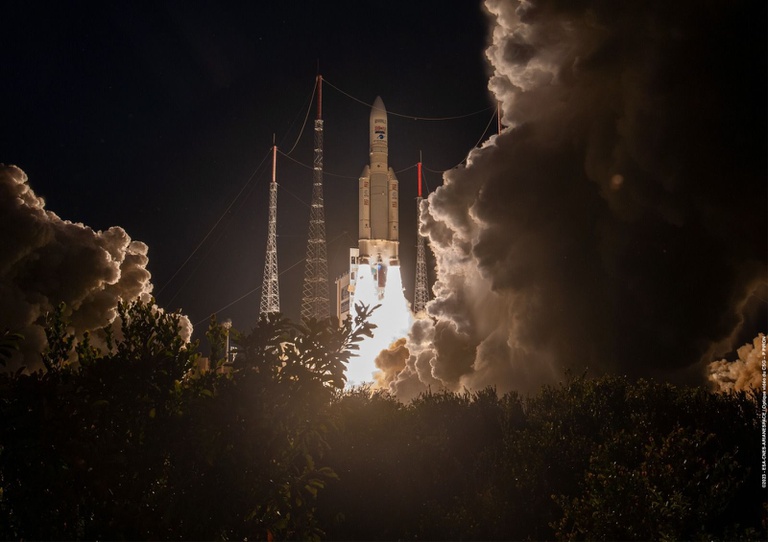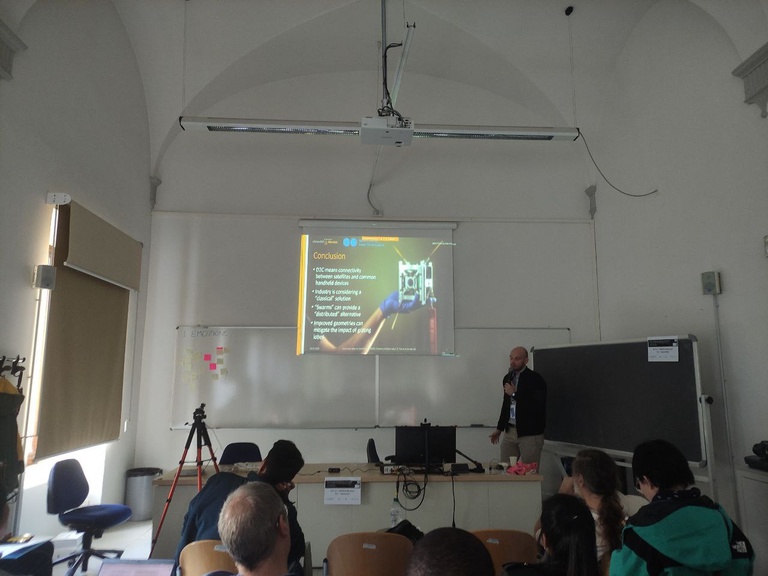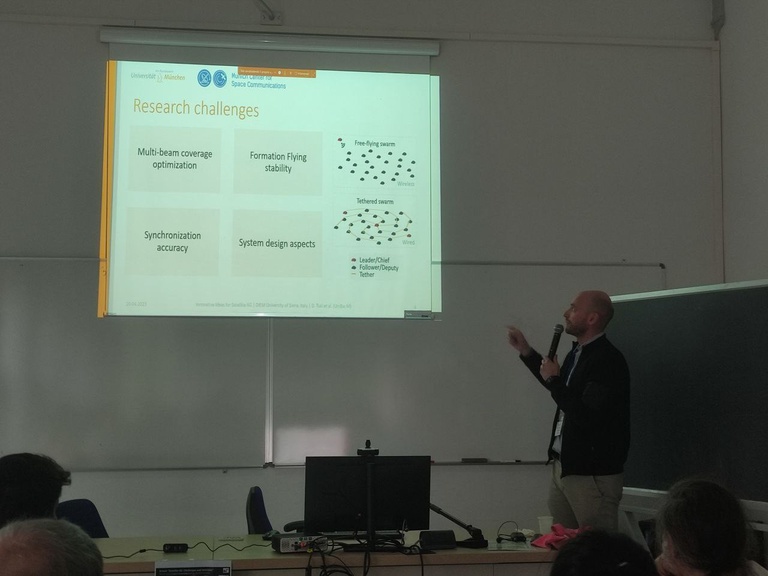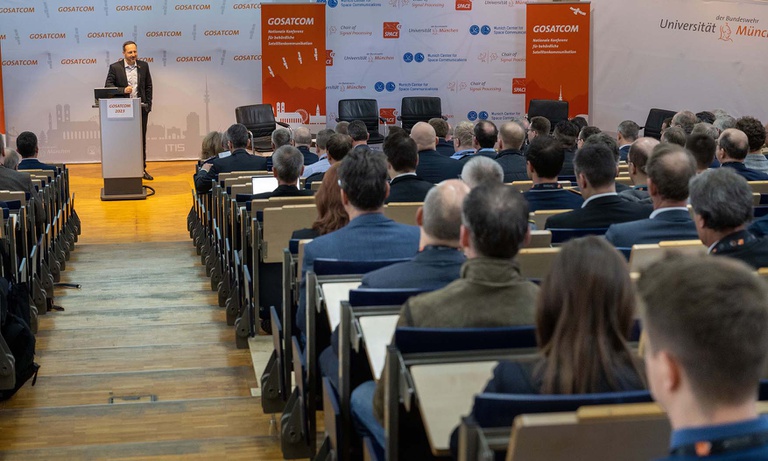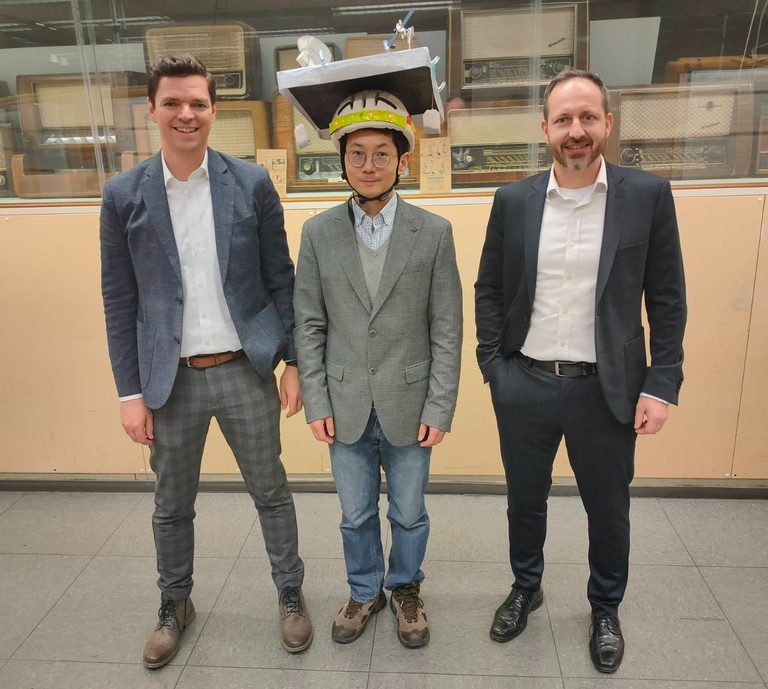| newer News / older News |
|
First year PhD. candidate Oscar Martinez work on Distributed Feeder Links for NGSO constellations has been awarded third place in the 6G and NTN: Challenges and Solutions Contest! December 20, 2023: Oscar Martinez starts his PhD journey at the University by securing the 3rd place in the IEEE Future Networks contest, which sought for innovating ideas in NTN and 6G technology.
This research is part of the HARMONY project, a doctoral program that brings together important industrial and academic players in the satcom sector, with the Bundeswehr University Munich as the coordinator. Oscar Martinez, along with Dr. Thomas Delamotte and Prof. Andreas Knopp, investigates the concept of distributed feeder links for NGSO Mega-constellations, aiming to overcome the current feeder link bottleneck while also enhancing system scalability. This work received attention and was presented in a webinar held on December 20th, 2023. The winning presentations and ranking announcements are available on-line on the following link: https://drive.google.com/file/d/1oAMJM4Pq9u-nKlTolr_qTst60glLs2gy/view?usp=drive_link Many thanks to the contest organizers from the IEEE Future Networks Community for providing this opportunity to share our work with a broader audience. This award represents recognition of the dedication and creativity of the team and manifests the growing interest within the scientific community in innovative feeder link solutions for LEO constellations. We look forward to the development of this technology. |
|
SeRANIS year-end meeting December 19, 2023: Where does the research of the SeRANIS project stand? And more specifically: where and under what conditions are the experiments taking place? As part of the last SeRANIS meeting of the year, the participating laboratory units opened their doors. Here, the project members reported on the current state of research regarding the preparations for the launch of ATHENE-1 in 2025.
We started at the test field, where Jun. Prof. Christian Hofmann led us through the test site prepared by our laboratory team. From here, the tour of the University of the Bundeswehr Munich (UniBw M) began. The meeting was planned to be very sporty: a total of 13 presentations took place in the afternoon. Our experts were also actively involved here: Diego Tuzi and Prof. Petra Weitkemper showed the developments in the area of the 5G campus network with satellite connection "5G to space". Dr. Thomas Delamotte presented the latest research results on hybrid beamforming of phased array antennas together with Prof. Lindenmeier. Prof. Knopp was very proud of the SeRANIS project team and another successful year. |
New article on satellite swarms for direct-to-cell connectivity published in the December 2023 special issue of IEEE Wireless Communications Magazine December 2023: Anywhere and anytime connectivity is one of the promises of 6G. This challenging goal cannot be achieved using only one network infrastructure. This explains why 6G is seen as a convergence point of terrestrial and non-terrestrial networks (NTN).
NTN comprises multiple components, but satellites are undoubtedly the key ones for ubiquitous connectivity because of their privileged view of the Earth. One of the most challenging aspects of integrating satellite networks into terrestrial networks is the direct connectivity between satellites and common smartphones or IoT devices, i.e., direct-to-cell (D2C) or direct-to-device (D2D). There is tremendous interest from industry, witnessed by the initiatives of companies such as Lynk Global, AST SpaceMobile and Starlink. They are addressing the problem with different plans, but based on a common conventional approach: monolithic satellite constellations in low earth orbits (LEO) and UHF/L/S frequency bands. Our institute is investigating an alternative approach based on distributed satellite systems (DSS). This approach uses small and lightweight satellite platforms (e.g., CubeSats) organized in a swarm configuration, coordinated to achieve a common goal. This new paradigm promises increased performance and reduced costs, but introduces new challenges that must be addressed. If you would like to learn more, take a look at our latest article "Distributed Approach to Satellite Direct-to-Cell Connectivity in 6G Non-Terrestrial Networks," written by Diego Tuzi with the supervision of Dr. Thomas Delamotte and Prof. Andreas Knopp and the collaboration of Estephania Flores Aguilar and Prof. Gunes Karabulut-Kurt of Polytechnique Montréal in Canada. The article is available in the December 2023 special issue of IEEE Wireless Communications Magazine at the following link: https://ieeexplore.ieee.org/document/10355084. |
|
Best Publication Award 2023 December 13, 2023. Our institute awarded the “Best Publication 2023 Award” to Kevin T. Li. The winning publication entitled “A Techno-Economic Assessment and Tradespace Exploration of Low Earth Orbit Mega-Constellations” has been authored by Christian A. Hofmann, Harald Reder, Andreas Knopp and Kevin T. Li.
This work presents a novel techno-economic framework, offering insights and quantifying the impact of changing parameters within the complex architecture of satellite constellations. The authors propose an enhancement to the existing framework using a common system engineering technique known as tradespace exploration. This approach provides clearer insights into the conceptual design of systems and a better understanding of the 'physics' behind proposed solutions. It enables a deeper analysis of key system parameters and performance indicators in such systems. Initially, the authors introduce key players in the ecosystem of mega-constellations, highlight recent advances leading to the rebirth of the concept of broadband LEO constellations, and develop initial rationale for key parameters in the cost model. Subsequently, they detail the applied techno-economic cost framework, extended through tradespace exploration. The authors present the optimal solutions derived from the exploration within the system, as indicated by the Pareto front of all results, and provide detailed insights into the interrelationships among specific key parameters. Overall, this work provides a comprehensive view of the intertwining possibilities within mega-constellations and lays the groundwork for further exploration of system design concepts for satellite constellations. |
B2+ conference The B2+ conference took place at the University of the Bundeswehr Munich (UniBw M) at the end of November. The Head of Human Resources at the Federal Ministry of Defence met together with his management team from UniBw M. The event focused primarily on current issues relating to personnel recruitment and development in the Bundeswehr. On the second day of the event, however, members of UniBw M had the opportunity to present some highlights from the university’s broad spectrum of research.
The SPACE research center demonstrated how the campus in Neubiberg has developed into a "Space Innovation Hub" in the field of satellite navigation and communication: with scientific minds and an infrastructure that not only enables laboratory research, but also a space mission such as the SeRANIS space research project. Professor Roger Förstner presented the wide range of expertise at the SPACE research center. He let the participants hold a real CubeSat in their hands and explained how it is used in teaching. Junior Professor Christian Hofmann and Professor Thomas Pany demonstrated how space infrastructure interacts with smartphones. Fake GPS signals briefly transported the participants' smartphones to Berlin and the smartphones were able to connect to the internet via satellites. Professor Andreas Knopp reported on the challenges of recruiting young talent. There is strong competition with universities, universities of applied sciences, research centers, and finally with the industry. The changed decision-making criteria of Generation Z demand for new methods must be used to recruit personnel. The wide range of research opportunities and the existing infrastructure are unique features of UniBw M. In order to maintain and expand this uniqueness, it is necessary to solve not only the shortage of young talent but also the problem of the lack of mid-level academic posts for laboratory managers. |
|
VDE ITG NewSpace Communications Position Paper Published Recently, the new position paper "NeSC – NewSpace Communications" has been published by the VDE ITG. In this position paper, the experts show the characteristics and technical boundary conditions of NewSpace Communications (NeSC) systems, describe current system solutions and market participants, opportunities and challenges of the NeSC concepts, and finally give recommendations for action for research, development and implementation of NeSC systems.
As part of the currently growing commercial NewSpace sector, new communication systems are being developed – so-called "Non-Terrestrial Networks" (NTN), which are increasingly based on NeSC system approaches. These are intended to complement the existing terrestrial mobile and wired networks for voice, video and data communication, thus enabling global availability. The combination of terrestrial and satellite-based systems will significantly increase the reliability and spatial availability of communication systems overall. We are very proud that Andreas Knopp, Marcus Knopp, Simon Heine and Kevin Li were part of the team of experts involved in the development of the position paper. More information: https://www.vde.com/de/itg/publikationen/studien/vde-positionspapier-nesc-new-space-communications |
|
European Space-enabled Connectivity Solutions for the Car of the Future Prof. Dr.-Ing. Andreas Knopp, the director of the Institute of Information Technology at the University of the Bundeswehr Munich, attended the "European Space-enabled Connectivity Solutions for the Car of the Future" workshop in Munich on November 7th, 2023. This event was organized by the German Aerospace Center (DLR), the European Space Agency (ESA), and the 5G Automotive Association (5GAA), with support from BMW Group. The workshop provided a platform for experts from the automotive and space sectors and government representatives to discuss the challenges and expectations of achieving seamless, reliable, and secure connectivity between the two sectors. At the panel discussion, Professor Knopp emphasized that his institute has already researched and tested the potential of satellite connectivity for renowned German premium car manufacturers. Over-the-air tests are particularly crucial in boosting the acceptance of satellite-based connectivity in the automotive industry. With its automotive test track, its own 5G network, access to satellite capacity, and an experimental ground station, the University of the Bundeswehr Munich, offers a unique combination for the evaluation of integrated non-terrestrial networks.
|
|
Keynote speech from Prof. Andreas Knopp at PIMRC 2023 September 5th, 2023, Prof. Dr.-Ing. Andreas Knopp, director of Institute of Information Technology at the University of the Bundeswehr Munich and coordinator of the dtec.bw SeRANIS project has held a keynote speech “Distribution: a key enabler for future satellite systems” during the IEEE PIMRC Conference 2023, a flagship conference of the IEEE Communications Society. The presentation was given during a dedicated workshop on “Mega Constellation Satellite Networks for 6G” in front of an audience of international academic and industrial experts.
In his talk, Prof. Knopp emphasized the growing importance of satellites to meet the requirements of IMT-2030 (International Mobile Telecommunications), a framework that sets the objectives of 6G development. While around 4% of the Earth surface can be covered with terrestrial infrastructures, a so-called “Ubiquitous Connectivity” will only be possible with the integration of non-terrestrial networks. In this context, coordinated formations of small satellites, known as satellite swarms, appear as a key enabler to provide broadband connectivity to our everyday life smartphones. The efficient exploitation of frequency resources with beamforming solutions and the synchronization of swarm nodes represent some of the research challenges discussed by Prof. Knopp during his intervention. The game-changing potential of coordinated distributed ground stations for high-speed data transfer between the ground network and the space segment was another key topic addressed in Prof. Knopp’s tutorial. The ever-growing demand for data rates in communication networks indeed confronts system designers with a risk of traffic congestion in the feeder link. In that respect, synchronized ground stations combined with the application of advanced multi-antenna signal processing schemes pave the way to highly efficient feeder link architectures. The keynote speech of Prof. Knopp has been an excellent opportunity to make the research community aware of the SeRANIS project and to emphasize existing synergies, especially with the HARMONY project, a Horizon Europe MSCA Industrial Doctoral Network coordinated by Prof. Knopp’s institute. *dtec.bw – Digitalization and Technology Research Center of the Bundeswehr – is a scientific center jointly supported by both universities of the Bundeswehr and part of the German government's economic stimulus program to overcome the COVID-19 crisis. With its inclusion in the German Recovery and Resilience Plan (GRRP), dtec.bw is funded by the European Union – NextGenerationEU. |
|
PhD thesis defense by Matthias Schraml On the 26th of July 2023, Matthias Schraml successfully defended his doctoral thesis entitled „Multiuser MIMO Concept for Physical Layer Security in Multibeam Satellite Systems.“
His thesis investigates the potentials and benefits of a multiple-reflector antenna scheme in geostationary satellite systems for physical layer security, i.e., confidentiality without encryption. The goal of the precoding algorithms for security is to generate a channel condition such that the legitimate users receive the signal in higher quality than all eavesdroppers and, thus, fulfilling the requirement of key-less physical layer security. The jury composed of Prof. Thomas Weyh (Chairman, UniBw M) and the examiners Prof. Armin Dekorsy (University of Bremen) and Prof. Andreas Knopp (Supervisor, UniBw M) awarded him the doctoral degree with great praise. |
|
H2Sat At 7:00 p.m. on July 5, 2023, the last Ariane 5 took off from Europe's Kourou spaceport in French Guiana with Heinrich-Hertz-Satellit (H2Sat) on board. This mission marks the first dedicated German telecommunications satellite-based research and testing effort to explore new technologies and telecommunications scenarios. Additionally, the H2Sat carries a military Ka-band payload for the Bundeswehr.
We are glad that our institute was able to contribute to this important German satellite mission from the very beginning. Prior to joining the Bundeswehr University Munich, Prof. Andreas Knopp acquired extensive knowledge as a Communications Engineer and a Satellite Program Manager for the military H2Sat payload while working at the Federal Office of Bundeswehr Equipment, Information Technology, and In-Service Support. He contributed significantly to the H2Sat Mission, collaborating with our Principal Scientist, Dr. Robert Schwarz for over a decade. In addition, the important German space mission received frequency coordination assistance from Stephan Winter, an external PhD researcher at our Institute, and his colleagues from AUDENS Telecommunications Consulting. We are now looking forward to supporting the In-Orbit Test Phase. Later on, our research group leader Dr. Thomas Delamotte will continue with novel Multiple-Input Multiple-Output (MIMO) experiments via H2Sat. The H2Sat mission is designed to investigate new communications technologies in collaboration with universities, scientific institutes, and industry. OHB SE, a German satellite manufacturer, constructed the platform and integrated the payloads. The project was managed by the German Space Agency in collaboration with the German Federal Ministry for Economic Affairs and Climate Action (BMWK) and the German Federal Ministry of Defence (BMVg). |
|
SatNEx V School 2023 – "Satellite 6G: challenges and solutions" award for best innovative idea April 2023: At the occasion of the SatNEx V School 2023, held at the Department of Information Engineering, University of Siena, ten participants submitted innovative ideas on the topic "Satellite 6G: Challenges and Solutions". The proposed concepts, presented in the form of short papers and talks open to the attendance of the IEEE Future Networks community, were evaluated by an international committee of nine satellite communication experts.
M.Sc. Diego Tuzi, research assistant at the Institute of Information Technology, University of the Bundeswehr Munich, won the first prize with his contribution entitled “6G Satellite Direct-to-Cell Connectivity: To distribute, or not to distribute, that is the question”. His work, co-authored with his supervisors Dr. Thomas Delamotte and Prof. Andreas Knopp, focuses on the potential benefits and main challenges to the use of satellite swarms for Direct-to-Cell connectivity. A satellite swarm is a distributed satellite system in which the nodes must cooperate to fulfil a certain mission design goal. In the studied scenario, the objective is to provide connectivity to common handheld devices such as smartphones (Direct-to-Cell connectivity). Satellite swarms represent a promising alternative to classical monolithic systems. For more information, our research team recently published a journal article entitled “Satellite Swarm-Based Antenna Arrays for 6G Direct-to-Cell Connectivity” in IEEE Access, available in open access at the following link: https://ieeexplore.ieee.org/document/10068542. The authors thank the organizers of the SatNEx V School 2023 for the honor of receiving this award and the opportunity to present their idea. |
|
GOSATCOM 2023 The GOSATCOM conference 2023 has taken place from 27. to 29. March with a record participation of 300 guests. A highlight was put in this year’s conference on the development of multi-orbit solutions to provide secure and cost-efficient governmental and military communication capabilities. Prestigious speakers gave the audience valuable insights into strategical orientations for future space programs including the new EU secure communication constellation IRIS². Podium discussions have been the occasion to confront the views of industrial, military and governmental actors on these many exciting developments of satellite systems. Considering the very dynamic evolution of the current space ecosystem, the conference has been a platform of exchange not only for well-established players but also for innovative actors from the New Space economy. The great success of this new edition has further confirmed the key importance of the event for the governmental and military satellite communication community.
In the context of the conference, the Tesat Spacecom Science Award (TESSA) has been awarded to a young researcher, Maximilian Stark, for his PhD defended at the Hamburg University of Technology and entitled “Machine Learning for Reliable Communication Under Coarse Quantization”. With this price, TESAT Spacecom and the GOSATCOM conference recognize the importance of groundbreaking scientific works to address the technical challenges of future communication systems. |
|
Yazhou Zhu Successfully Accomplished his Doctoral Defense On 17 January 2023, Yazhou Zhu, a research assistant at our institute, accomplished his doctoral defense. The dissertation is entitled “Distributed Resource Optimization for NOMA Transmission in Beamforming SATCOM.” The dissertation investigated the incorporation of Non-Orthogonal Multiple Access (NOMA) with existing Beamforming-SATCOM for higher throughput and more user connectivity. More importantly, the dissertation provided insights into resource optimization strategies with user fairness objectives for non-orthogonal SATCOM. The results demonstrated that the benefit of NOMA is achievable in overloaded multi-beam satellite systems since the high user channel correlation is generally inherent in multibeam geo-satellite systems. The dissertation delivers a basis for further research in non-orthogonal SATCOM. The doctoral defense committee was headed by the committee chair Prof. Stefan Schäffler in the presence of the two examiners, i.e., Prof. Andreas Knopp and Jun.-Prof. Christian Hofmann. Yazhou Zhu began his research at our institute in May 2018. Currently, he is employed at GPP Communication as a software engineer in digital and analog signal processing.
|
| newer News / older News |
News 2023

